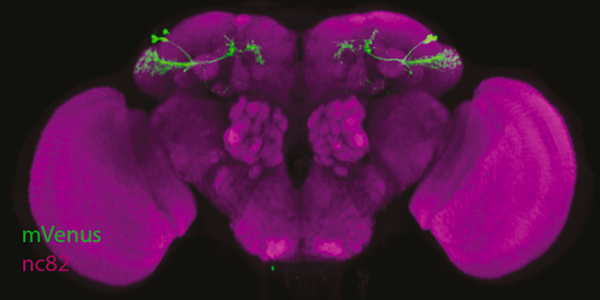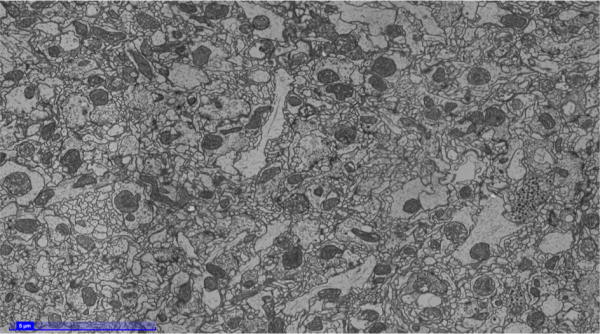Researchers have known for a long time that innate and learned behaviors are coming from separate brain areas. Each one is stimulated by a sensation, like a smell or a picture, but the way innate and learned responses are integrated to yield an appropriate behavior remained unclear. In an article published in the journal Neuron, scientists from the Brain Plasticity Unit (CNRS, ESPCI Paris) and from the Medical Research Council (Cambridge) managed to identify in the drosophila brain some neurons involved both in the innate response to attractive odors and in aversive memory retrieval after olfactory conditioning. Those researchers also showed that the memory of an aversive experience expresses through a lowered activity of this circuit innately dedicated to mediating an attractive behavior. Hence, flies run away because they are less attracted.

The group of Thomas Preat at Brain Plasticity Unit has a long-term expertise in the study of memory mechanisms in Drosophila. In 2011, they identified for the first time an output neuronal circuit (MB-V2 neurons) for the brain memory center, ie a neuron allowing this memory center to transmit information to other brain areas. The group of Gregory Jefferis from the Medical Research Council in Cambridge is an expert of olfactory neuronal circuits in drosophila. Both team joined forces to study how information from the memory center and circuits involved in innate olfactory response communicate.
Cambridge scientists designed a computational method to identify among the 100 000 neurons of drosophila brain the ones likely to be connected downstream of MB-V2 neurons. They found around thirty of them, which were tested at the Brain Plasticity Unit. Pierre-Yves Plaçais, leading scientist of the project on the Paris side, explains that “memory tests were performed on about 30 000 flies, trained to associate an olfactory stimulus with unpleasant sensation. We can then block each neuron of interest when the flies have to remember this associative experience, and thus identify in which case it prevents the memory retrieval.” Researchers actually isolated two types of neurons, called PD2a1 and Pd2b1.
They drew on an extraordinary tool published earlier this year by the group of Davi Bock at the Janelia Research Center (Howard Hughes Medical Institute, USA): a complete recording of the drosophila brain in electron microscopy with nanometer resolution (see figure). The mapping of each neuron inside this registration is a colossal task.
Yet Cambridge scientists managed to locate and track PD2a1and PD2b1 neurons. They found these neurons were also downstream of olfactory neurons activated by attractive odors, especially from food. Behavior experiments at Brain Plasticity Unit confirmed that PD2a1 and PD2b1 neurons were indeed involved in innate olfactory attraction.
Then, scientists used in vivo calcium imaging to monitor PD2a1 and Pd2b1 neurons activity, and thus to access the coding of aversive memory. After associative olfactory conditioning, neuronal activity in response to the olfactory stimulus was decreased.
 Fig: This picture illustrates the recording of a drosophila brain by electron microscopy. The whole dataset is made of 7062 sections, and each section contains ~800 pictures like this one. Complete dataset available at https://catmaid-fafb.virtualflybrain.org
Fig: This picture illustrates the recording of a drosophila brain by electron microscopy. The whole dataset is made of 7062 sections, and each section contains ~800 pictures like this one. Complete dataset available at https://catmaid-fafb.virtualflybrain.org
The aversive memory circuit thus acts as a diversion that tends to lower a circuit dedicated to induce an attractive behavior. However, this decrease is not sufficient to compensate a very strong attractive olfactory stimulus, e.g. vinegar. These results indicate that the architecture of neuronal circuits in itself could predict how easily some innate responses can be (or not) modulated by experience.
Following this discovery, researchers are know thinking of exploiting the electron microscopy dataset for identifying new neuronal network involved downstream in olfactory response, but also for deciphering circuits involved in the formation of long-term memory.
Related publication:
Communication from Learned to Innate Olfactory Processing Centers Is Required for Memory Retrieval in Drosophila, Neuron, 2018
DOI : https://doi.org/10.1016/j.neuron.2018.08.037
Contact: Pierre-Yves Plaçais, pierre-yves.placais@espci.fr







